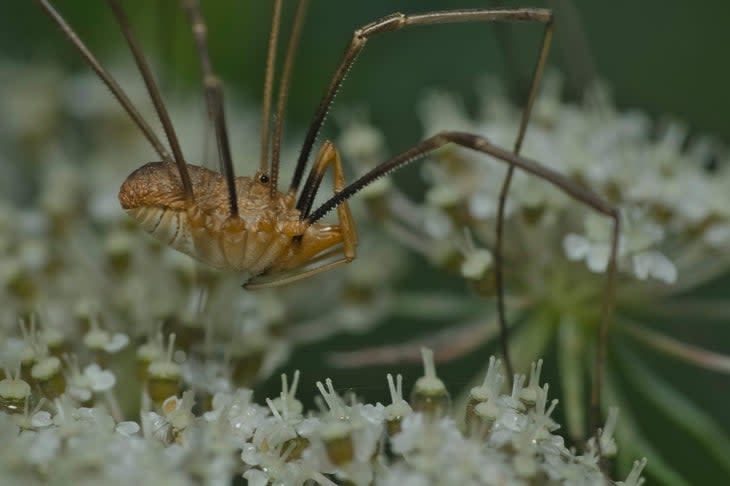The Cool, Creepy Reason Why Hundreds of “Spiders” Surrounded a Hiker’s Tent
This article originally appeared on Outside
If critters with lots of legs make your skin crawl, the video that Lake Clark National Park and Preserve posted to their Facebook page on Halloween probably looked like a nightmare come alive. In the 45-second clip, a silent camper shines their light around the interior of their tent; through the translucent fabric, you can see hundreds of spider-like creatures crawling across the exterior and gathering in huge clumps.
In the comments, the park's followers debated what they would do if they woke up to a similar midnight surprise; answers included "die of a heart attack," throw the tent away," and the ever-popular "burn it." But if the video has you instinctively fumbling for your lighter or reconsidering your plans to hike the Alaskan backcountry, let us clear up a few misconceptions first.
First off: Those aren't spiders. Also known as daddy longlegs, harvestmen are members of a group of arachnids called Opiliones, which are related to but distinct from their better-known eight-legged relatives like spiders and scorpions. Harvestmen have one body segment versus spiders' two, and they have two eyes where most spiders have eight. And if you've heard that old story about daddy longlegs having the deadliest venom in the world but lacking fangs large enough to bite through human skin, it's a myth: Harvestmen eat mostly decaying plant and animal matter, plus the occasional small insect, and lack both venom and fangs.
Second, this is far from the first time that harvestmen have decided to throw a family reunion in an Alaskan national park. In 2020, Glacier Bay's Facebook page shared a picture of one of the preserve's buildings wearing what looked for all the world like a Tom-Selleck-level Movember 'stache made up of hundreds or thousands of harvestmen clustered in a dense ball, their long legs sticking out at every angle like stray hairs.
If they're not waiting to pounce on a camper and devour them alive, what are those leggy creepy-crawlies doing? Even researchers don't have a definite answer, but they have a few good guesses. One leading one is that they're trying to stay comfortable. Harvestmen prefer moist environments, and clustering together could allow them to create a humid microclimate--"not unlike a sweaty locker room," as the New York Times's Katherine J. Wu wrote in 2020. That would go a long way towards explaining why harvestmen tend to huddle up in the Alaskan fall, when humidity drops. Other possible explanations include that the harvestmen are clustering for protection from predators, or to help them find mates.

Whatever the reason behind it, that harvestmen-coated tent is an example of the animal kingdom's ability to adapt. With its harsh winters, Alaska may not seem like arachnid country compared to the tropics or more temperate climes, but spiders and their relatives are survivors, and even up north, they thrive. Scientists working in the Arctic have estimated wolf spiders' population densities there as roughly one for every 2 meters of land. Working off that estimate, there is roughly 125 times as much wolf spider by weight as there is wolf in Alaska.
So the next time you're up north and you spot a big, leggy pile of bug on your tent, resist the urge to pick up a shoe, and grab your camera instead: You just saw one of Alaska's signature animals.
For exclusive access to all of our fitness, gear, adventure, and travel stories, plus discounts on trips, events, and gear, sign up for Outside+ today.

